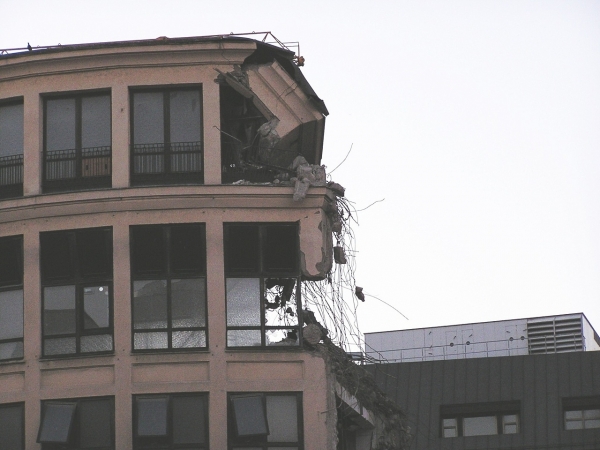Caloric Energy of Earthquakes Would Feed Millions
In the news Monday were reports of a 6.0 magnitude earthquake near Guatemala City, Guatemala. This follows last Monday’s news of a 7.0 magnitude quake in Haiti, which I wrote about in my last blog. Our first concern for Guatemala might be fear of a tragedy similar to Haiti. After all, 6.0 is almost 7.0, or it’s at least 6/7 or 85% of the strength, right? Fortunately (for the people of Guatemala City), that’s totally wrong in the context of the Richter scale.

For folks like me that might want to appreciate why Guatemala is faring so much better than Haiti, a brief review of the Richter scale is worthwhile. It’s not my forte, but engineers of all types, particularly structural engineers in active seismic zones such as California, must respect the Richter scale and how it may impact their design considerations. Various codes and industry standards may require design compliance with anticipated earthquakes at specified magnitudes and intervals. In fact, there’s a complete sub-discipline of structural engineering referred to as seismic engineering that focuses on the science of earthquake survivability.
The most significant point to consider is that the Richter Scale is not a linear scale. That’s why it’s totally erroneous to think of a magnitude 6.0 earthquake as being only 85% of a magnitude 7.0 quake. In fact, the Richter scale is a logarithmic scale, and a difference of one magnitude rating (let’s say 6.0 vs. 7.0, in our current events example) actually results in an energy difference of 31 TIMES. That might be hard to digest, so how about this to further confuse things: a difference of two numbers on the Richter scale results in 1000 times the difference in energy released by the two comparative quakes.
Kind of hard to believe, isn’t it? For those Doubting Thomases out there, the following link is an online calculator that will allow a user to calculate the energy created by an earthquake of any magnitude. You can compare any magnitude quakes you’d like to, and note the difference in energy released. The answers are provided in “ergs.”
An erg is a term you don’t hear too much about. It was unfamiliar to me, so I had to look it up. An “erg” is the energy (or work) done by one dyne over a distance of one centimeter, but that doesn’t help me much, either. I understand energy better in terms of nutritional calories. We can use this online tool’s conversion feature to figure out that the Guatemalan earthquake, preliminarily recorded at 6.0 on the Richter scale, released 15 trillion calories of energy. Those are gram calories, so converting that to kilogram (or nutritional) calories, we end up with 15 billion calories. That’s quite a few Big Macs. Assuming 2000 nutritional calories per day is the recommended intake for a generic group of people, a 6.0 magnitude quake would feed 7.5 million people...if only that energy could be captured and converted!

Andrew Kimos
Andrew Kimos completed the civil engineering programs at the U.S. Coast Guard Academy (B.S. 1987) and the University of Illinois (M.S. 1992) and is a registered Professional Engineer in the state of Wisconsin. He served as a design engineer, construction project manager, facilities engineer, and executive leader in the Coast Guard for over 20 years. He worked as a regional airline pilot in the western U.S. before joining the Buildipedia.com team as Operations Channel Producer.
Website: buildipedia.com/channels/operations
